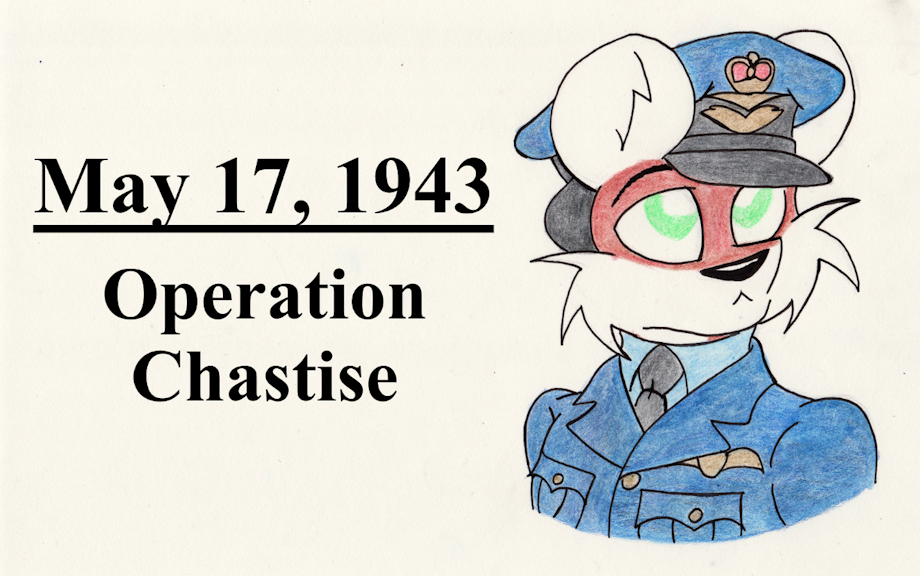On May 17, 1943, 19 Avro Lancaster bombers of Britain's Royal Air Force (RAF) conducted a daring raid against dams along the Ruhr valley in Germany. The goal of the attack was to knock out the dams and thus the hydroelectric power which was much needed for the German war industry. The loss of the dams would also deny water for steel-making, drinking, and the operation of canals used to transport goods across Germany.
The attack required the use of a new tactic and weapon. It was believed that an explosive detonating on the dam below the waterline would cause the dam to breach; however, the Germans had strung nets in the water to prevent the use of torpedoes. Instead, the RAF used a large (approximately 9,000 lbs) barrel bomb which was spun backwards at 500 rpm before being released. The idea was that the bomb and its backspin, if dropped at the correct height (~60 ft) and speed (~240 mph), would hit the dam and roll down the dam's side below the water before detonating. Due to its size, the Lancaster bombers modified to carry the bombs lost their top turrets, much of their armor, and even the bomb bay doors, leaving the bomb suspended below the aircraft.
The mission was a dangerous one. To begin with, the aircrews were forced to fly low over a heavily defended target just for the bomb to work properly. To get to the target, the aircraft were forced to fly 100 ft or lower in order to avoid radar detection and reduce the likelihood of being spotted and intercepted. The mission was also conducted at night to further reduce the risk of detection. Despite the dangers, the RAF bombers succeeded in breaching the Möhne and Edersee dams and inflicting minor damage on the Sorpe dam. However, the longterm impact of the raid was not as severe as British officials had hoped as Germany was able to quickly repair the damage and restore the flow of water and generation of power. Despite this, the raid was boost to British morale and served to divert German manpower away from other areas such as the defense against the Soviet advance and the construction of the Atlantic Wall.
Of the nineteen aircraft sent on the raid, only eleven returned to Britain. One of the eleven had lost its bomb after clipping the ocean while crossing sea on its way to the target, forcing the aircraft to turn back. Of the aircraft lost, two were lost after striking power lines while approaching their targets. The other six losses were due to anti-aircraft fire. 53 aircrew were killed in the raid and three more were captured
Keywords
male
1,243,642,
fox
256,821,
vulpine
37,713,
this day in history
248,
tdih
244,
wwii
230,
world war two
130,
britain
62,
raf
27,
royal air force
6,
may 17
1,
operation chastise
1,
dam busters
1
Details
Published:
6 years, 5 months ago
18 May 2019 04:58 CEST
Initial: 921cddc690ea1f880339307cf1639e72
Full Size: 33061d827192f6d2fc7a0a4c7c7917b3
Large: be7a23d6dea3697797850416bef46509
Small: 6fd3b016b106c58e74a8dfac75767d46
Stats
25 views
7 favorites
4 comments
